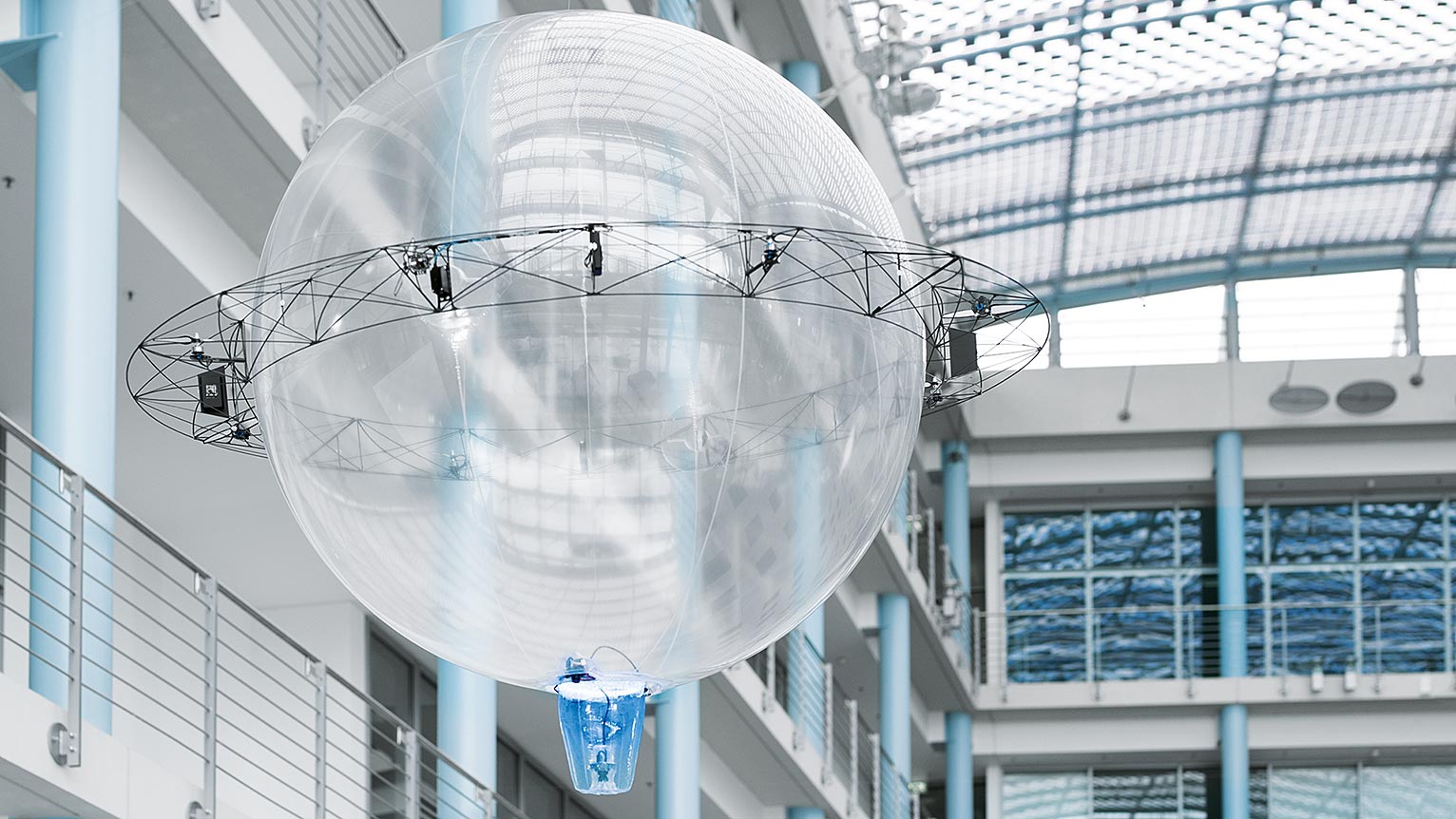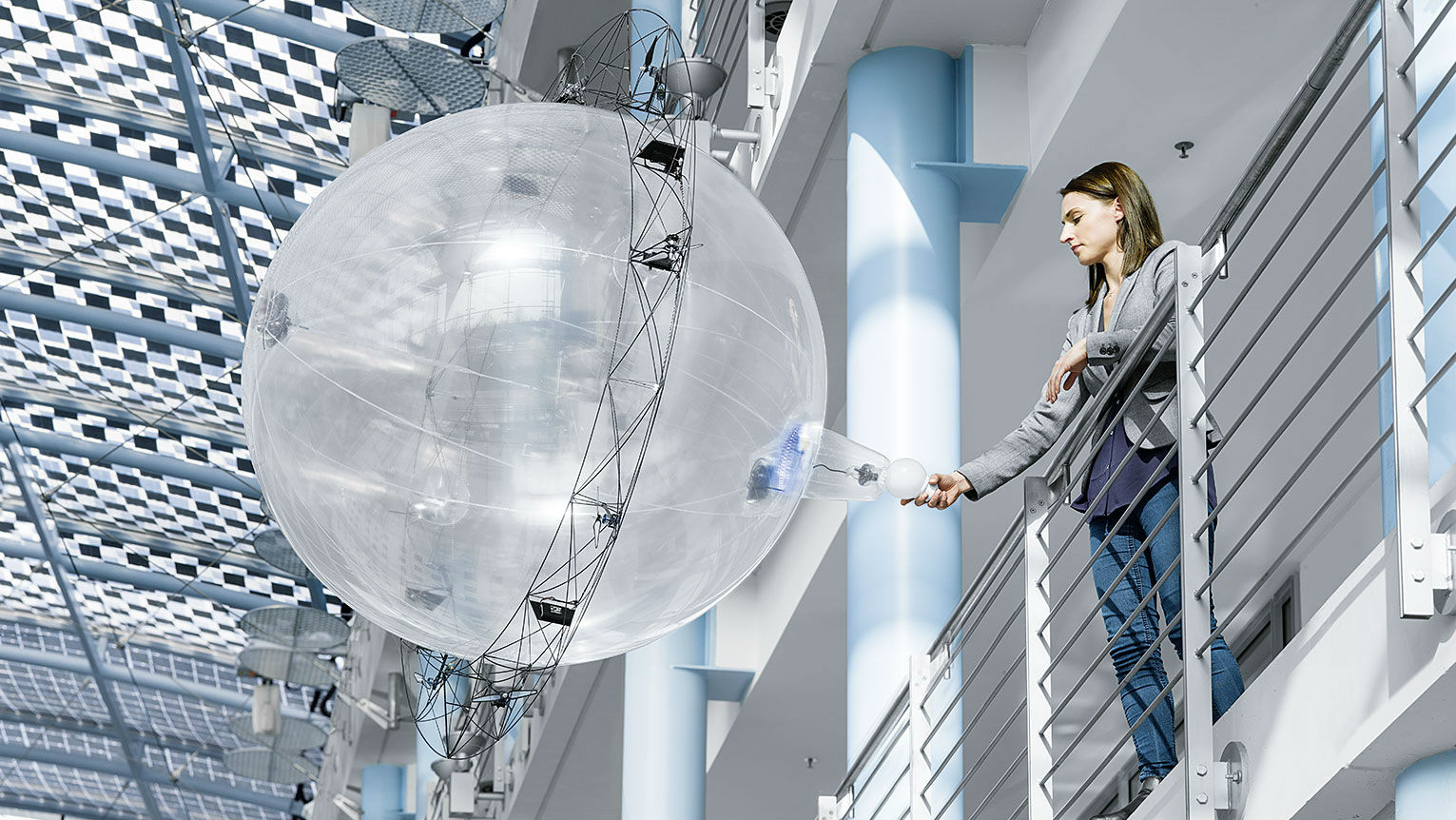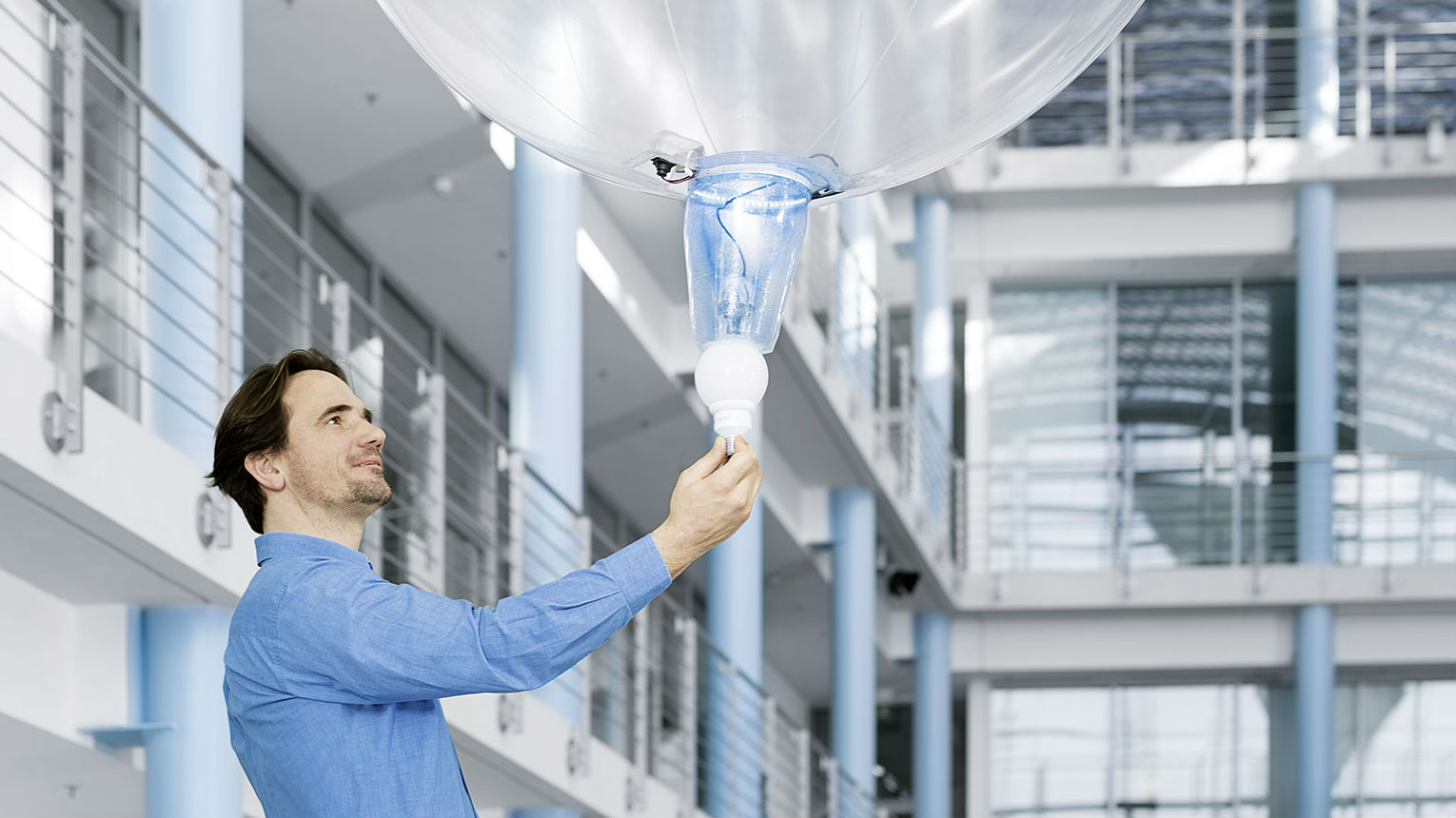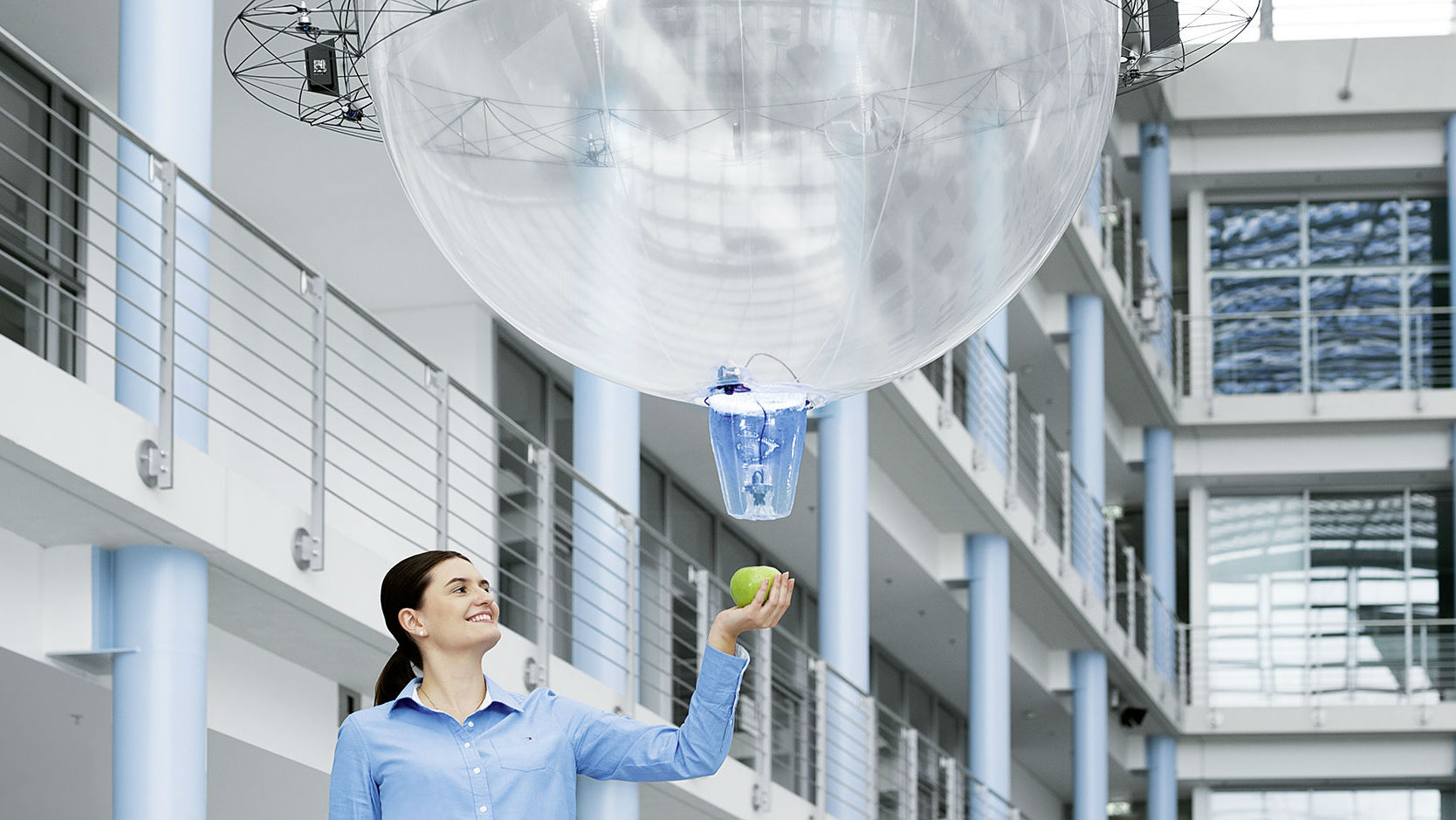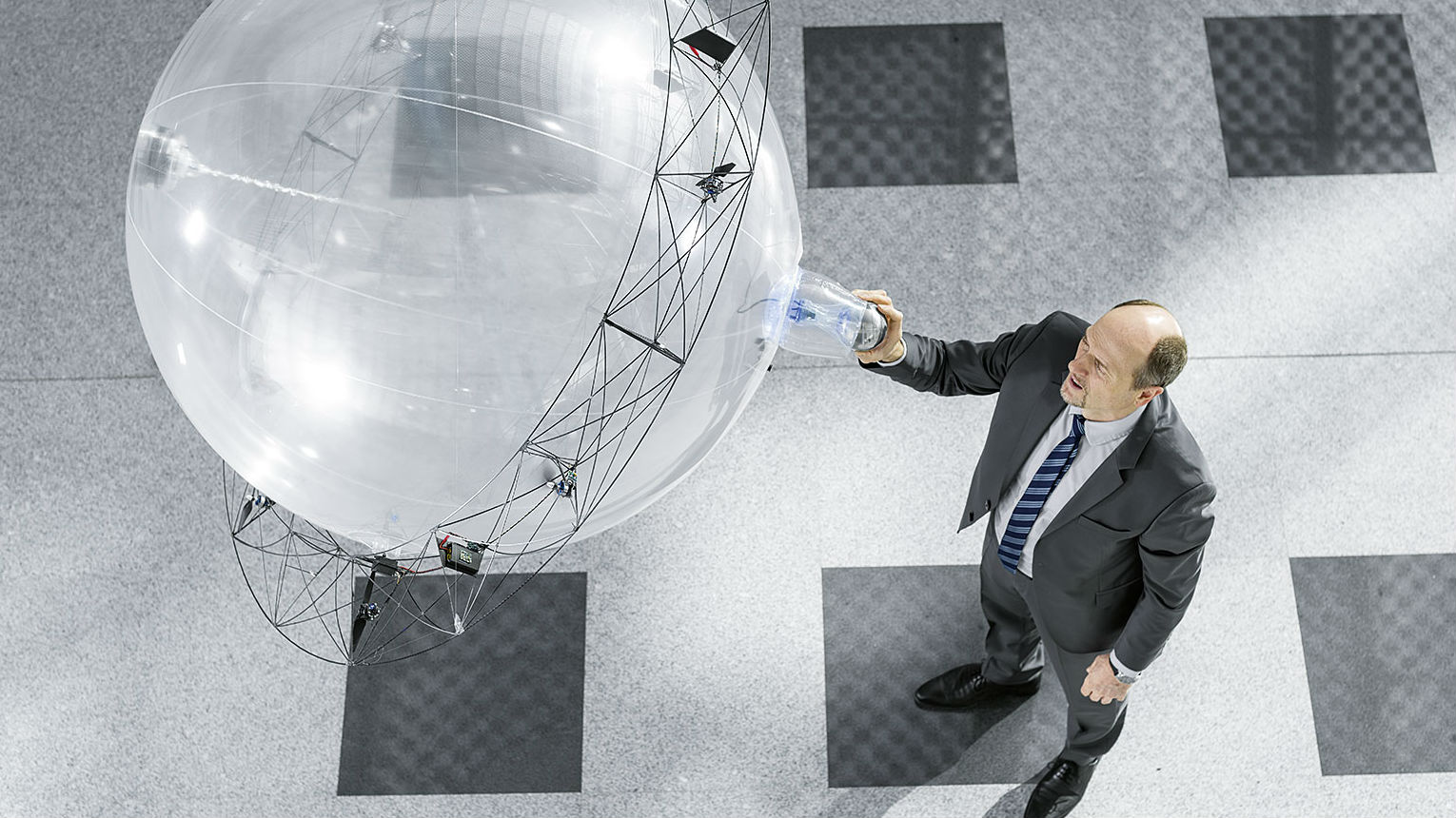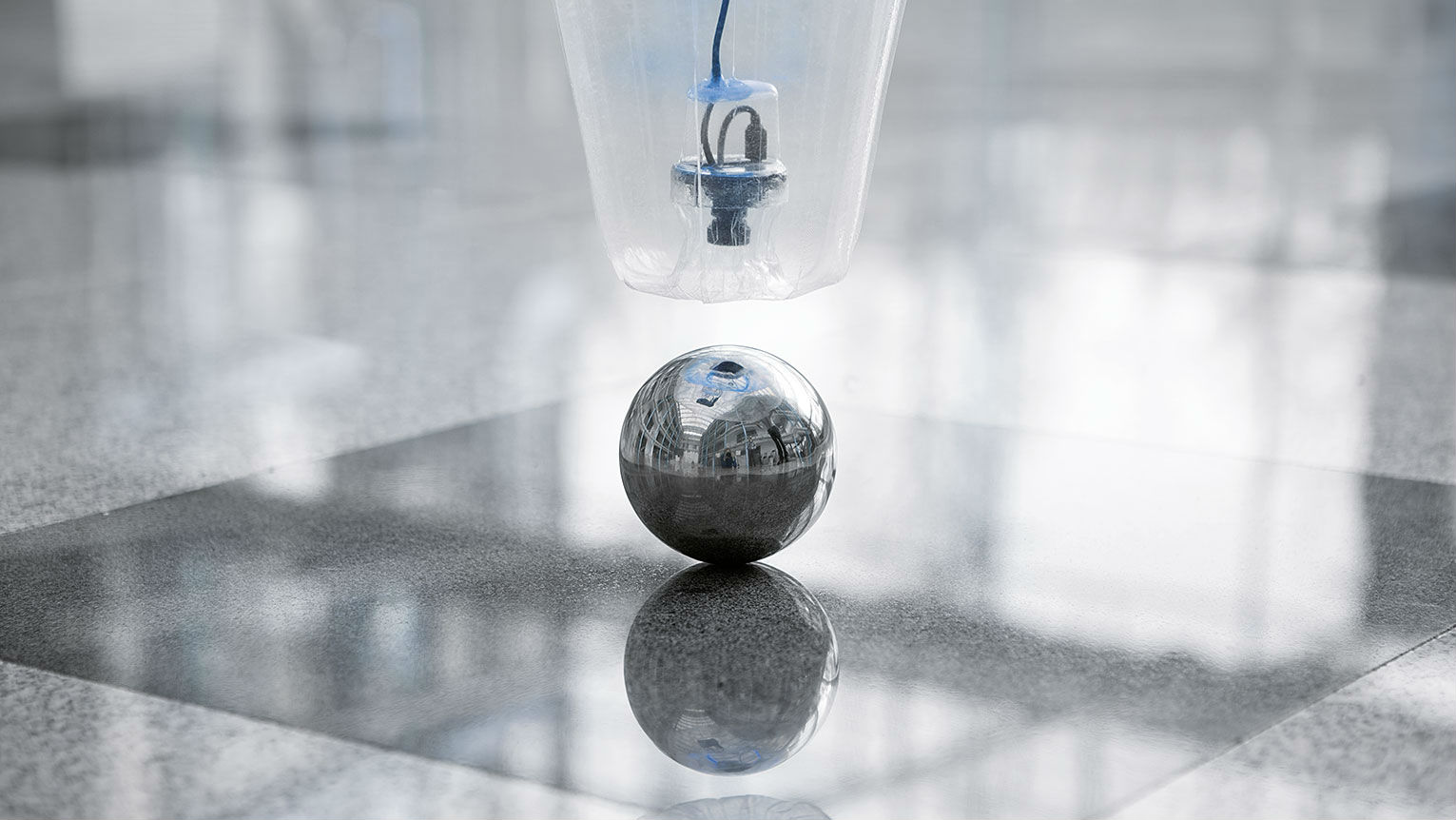The drone is made of an ultra-light carbon ring that surrounds the circumference of the sphere with eight adaptive propellers. Each propeller can spin independently of the others in the system, which allows the drone to start, stop, and change direction at the drop of a hat. The drone’s spherical body is an independently rotating ball of helium, inside of which you’ll find the integrated smart gripper.
Festo’s proprietary grabbing technology in the FreeMotionHandling drone was inspired by its previously released FlexShapeGripper device, which was the company’s original take on the science behind a chameleon’s tongue. When the FlexShapeGripper’s silicon tip touches the object in question, a pneumatic piston retracts within the grabber’s internal chamber of compressed air in order to create a vacuum. In order to fill the void created in the interior air chamber, a water-filled exterior chamber surrounds the object in order to pick it up and guide it to its destination, no matter the object’s shape or size.
Related Offer: See here for the latest drones on the market
The FreeMotionHandling drone doesn’t require a pilot, since its two on-board cameras interact with the surroundings while hooked up to a fully tested indoor GPS. Festo envisions the autonomous system becoming a crucial part of factory and production lines, boosting productivity and efficiency at all stages of manufacturing. Since the silicon tip and grabbing system of the drone’s gripper could theoretically capture anything, and the drone can fly in any direction autonomously, there is no end to the possibilities. Most likely, FreeMotionHandling will be particularly useful in supporting human workers in hard-to-reach places and at dangerous heights, such as construction sites.
